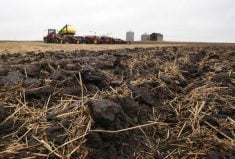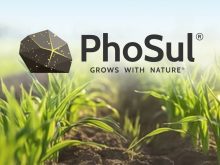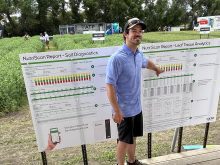Enhanced efficiency fertilizers deliver nitrogen to the plants more effectively, but weather patterns effect optimal rates
This is the fourth of a four-part series on enhanced efficiency fertilizers. Links to the other stories in this series are below.
For the last two years, researchers from the University of Saskatchewan and Agriculture Canada evaluated the impact enhanced efficiency fertilizers (EEF) have on crop yields for wheat and canola.
Related stories in this series:
- Part 1 – Enhanced efficiency adoption is low
- Part 2 – How do Enhanced Efficiency Fertilizers work?
- Part 3 – When do EEFs make agronomic sense?
They applied urea and SuperU, a dual inhibitor product, at two sites in Saskatchewan.
Read Also

Genesis Fertilizers seeks government funding
Genesis Fertilizers is actively seeking funding from government and a strategic partner. The company dispelled a rumour that DL E&C has abandoned the project.
One was in black soil zone near Melfort, the other was in dark brown soil zone by Saskatoon.
The scientists cut the rates by 10, 20 and 30 per cent, for both urea and the SuperU.
The fertilizer in the experiment was side banded.
“We found we could lower the (SuperU) rate to 20 below the soil test recommendation and get a large emissions reduction, around 40 per cent. And no impact on yield in both canola and wheat,” said Richard Farrell, soil scientist at University of Saskatchewan.
“The yields were not significantly different from the 100 per cent (soil test recommendation rate)…. Moving into that 20 per cent reduction gave you the best of both worlds. A nice emissions reduction and no effect on yield.”
Most of the research on EEFs has been at a 100 per cent soil test rate. Scientists have focused on greenhouse gas emissions from nitrogen fertilizer and were less interested in the agronomics of EEFs.
That way, the rate differences don’t factor into emissions reductions, Farrell said.
In 2023, Farrell estimated that enhanced efficiency fertilizers cost about 15 per cent more than conventional fertilizers.
If a grower applies an EEF at 80 per cent the recommended soil test rate, and still achieves the same yield as urea at 100 per cent, the on-farm economics of an enhanced efficiency product becomes more appealing.
Drury, Ward Smith from the AAFC research centre in Ottawa and a group of scientists from China published a meta-analysis on inhibitors and their effect on ammonia losses, nitrous oxide emissions and crop yields.
The meta-analysis agreed that EEFs could be applied at a lesser rate because the products deliver nitrogen to the plants more efficiently.
“Some reductions in the application rates of fertilizer N could be realized without negatively impacting crop yields…. The opportunity to reduce N application while maintaining crop yields could allow for the co-benefits of reduced NH3 volatilization, lower N2O emissions, and lower N leaching and runoff from soil,” Drury said.
To cut rates, growers and agronomists must first know the optimal rate for a particular crop and a particular region.
Answering that question can be difficult, said Tom Bruulsema, chief scientist with the International Plant Nutrition Institute Canada.
“If you look at data over time, you’ll see that each year has a different optimum rate. It’s driven by the weather.
Some years have a higher yield potential than others. Weather and soil conditions can increase or decrease soil mineralization of N and increase or decrease N losses.
“It’s a complex combination of weather impacts. Which results in farmers not (really) knowing, what is the optimum rate,” Bruulsema said.
In general, Canadian growers could be applying more nitrogen than the crop needs.
“Some years it’s slightly short and some years we’re over by quite a bit… In most years, it’s 10-20 per cent more than the actual optimum rate for that year,” Bruulsema said.
Farrell’s study is still unpublished, but more research is needed to confirm when and where it’s possible to cut application rates for enhanced efficiency fertilizers.
Farrell is hoping that research farms across Saskatchewan will repeat the initial study from Melfort and Saskatoon, which would create a larger data pool on EEFs, lower rates and crop yields.
It can be difficult to study the potential benefits of EEFs, because weather conditions have a massive impact on nitrogen losses.
In 2020 and 2021 a University of Saskatchewan graduate student looked at the agronomic and environmental benefits of using EEFs on canola production.
But 2020 was dry and 2021 was a year with an exceptional drought.
“Our emissions data was next to nothing,” Farrell said. “Our (EEF) showed virtually no effect… because there were no emissions to reduce. Because it was so dry.”
Looking forward, Farrell and soil scientists from other institutions are starting a new research project, which will focus on variable rate technology and EEFs.
Maybe it’s possible to use the products strategically, on parts of a field where N losses are a greater risk.
“The idea is, in high emitting areas… which are these lower lying areas, higher organic matter… where water accumulates, we’ll go in with these enhanced efficiency products,” he said.
“If you have an area that is likely to be a little wetter… I think an enhanced product would be a good thing to try out.”
















